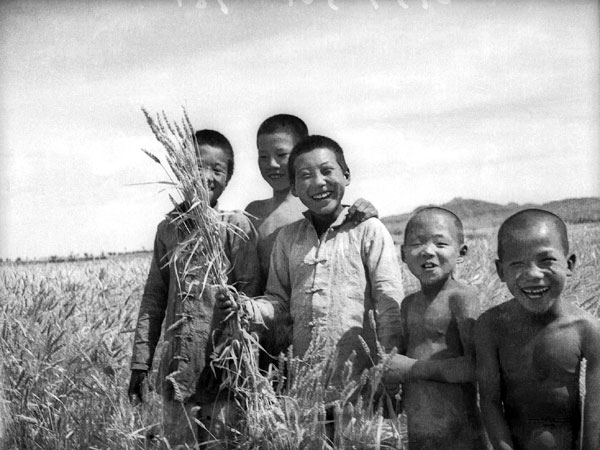Portraits of reform
Updated: 2013-01-04 10:25
By Lin Qi (China Daily)
|
|||||||||||
 |
|
Children work on farmland. Gao liang |
"Women elected such a person to be their head. But at their first meeting, the head kept silent all through. The reason was that her mother-in-law was also present, and it was not virtuous for a woman to speak in front of her mother-in-law."
Crook writes in the autography: "Against this background of backwardness and poverty and toil and oppression, the peasants maintained an impressive dignity and self-respect, a sense of humor, an eloquence full of vivid imagery and an ingenuity with which I could not compete."
It's a love for China and its people that made the couple stay for 40 years.
"Their photos show a desire to communicate and have woven the thread of photographic history in China," says Gao Chu, the exhibition's co-curator and a researcher on Chinese photographic history.
He says no more than 2,000 photographic plates and limited text about land reform have been preserved.
"The Crooks' photos captured the economic structure and social order of a typical village of North China, which would complement our research on reform," he says.
Related Stories
Chinese are attracted to branded British universities 2012-12-17 12:03
British Museum exhibits works of art by former Chinese vice premier 2012-12-17 11:52
British film week 2012-12-10 14:39
Chinese are attracted to branded British universities 2012-12-04 09:35
British classics 2012-11-26 14:19
Today's Top News
Police continue manhunt for 2nd bombing suspect
H7N9 flu transmission studied
8% growth predicted for Q2
Nuke reactor gets foreign contract
First couple on Time's list of most influential
'Green' awareness levels drop in Beijing
Palace Museum spruces up
Trading channels 'need to broaden'
Hot Topics
Lunar probe , China growth forecasts, Emission rules get tougher, China seen through 'colored lens', International board,
Editor's Picks

|

|

|

|

|

|





